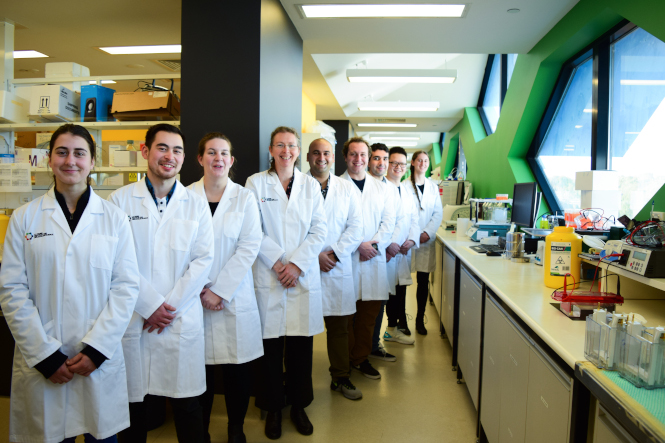
An update from Associate Professor Christine Hawkins
Survival rates for osteosarcoma patients have not improved significantly since the 1980s
Osteosarcoma is the most common type of primary bone cancer, but it continues to be fatal for over a third of patients. It is also fatal for most patients whose cancers have spread to other parts of the body (typically the lungs) by the time it is diagnosed.
Osteosarcoma impacts the very young
About 100 Australians are diagnosed with osteosarcoma each year. Although it is less common than other cancer types, a third of those diagnosed are children or teenagers.
For the 40% of patients who do not survive, many decades of life are lost because osteosarcoma tends to arise at younger ages than most cancers. And for those who do survive, their health is severely compromised by their exposure to intensive chemotherapy.
While dramatic improvements have been made in the outcomes for patients with many types of cancer, survival rates for osteosarcoma patients have not changed for decades. Over a third of these patients still succumb to this cancer.
A new class of anti-cancer agents
“SMAC mimetics” (also known as “IAP antagonists”) are new class of anti-cancer drugs that are presently being tested for safety and efficacy in patients with other types of cancer.
My team and I are working on a project using mouse models to predict whether these drugs can be effective in treating osteosarcoma.

A/Prof Hawkins (fourth from left) and her research team at La Trobe University.
We will also explore the possibility that SMAC mimetics may be less prone than chemotherapy drugs to cause mutations (and hence new cancers) and damage heart and kidney tissue.
If SMAC mimetics can safely and effectively treat osteosarcoma in mice, that would inform the design of clinical trials to determine the utility of these drugs for patients, helping to improve outcomes.
Where to next?
Ideally, we’d like to see SMAC mimetics reach clinical trials for bone cancer patients. Given how positive these initial results from testing on mice have been, it is hoped that SMAC mimetics will be able to offer osteosarcoma patients the breakthrough in cure rates we’ve been waiting decades for.
This Christmas, will you make a gift to cancer research?
Your support can help cancer research like A/Prof Hawkins’ reach clinical trials sooner, where real breakthroughs in bone cancer treatment can be made.
Donate now
Thank you, for your incredible, life-saving support.